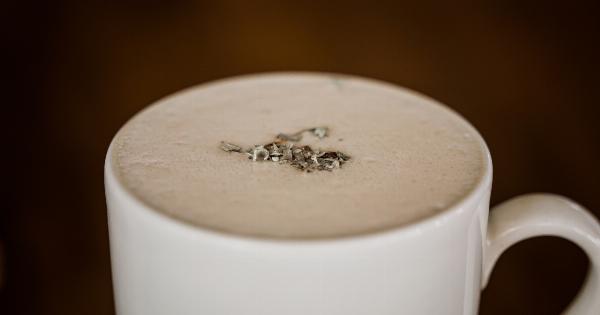Most of us love a hot, steaming cup of tea on a cold winter morning. But tea lovers in warmer climates may prefer to add ice to their tea instead.
Have you ever wondered what happens when you add ice to hot tea? Does it change the taste, aroma, or chemical composition of the tea? In this article, we will explore the science behind adding ice to hot tea.
Temperature and Taste
The temperature of a beverage can affect its taste. Hot tea, for example, has a stronger taste compared to iced tea.
According to a study published in the journal “Food Quality and Preference,” the ideal temperature for drinking green tea is said to be around 60°C because it allows for the perfect balance of sweetness and bitterness. Any hotter than this and the tea will taste too bitter. However, if you add ice to hot tea, it cools down the temperature of the tea and can change the taste.
When you add ice to hot tea, it dilutes the tea, making it less concentrated. This results in a milder taste. The cooling effect of the ice also numbs your taste buds slightly, making the tea taste less sweet.
Therefore, if you prefer a milder and less sweet tea, adding ice is a good option.
Aroma and Flavor
Aroma is an important aspect of tea tasting. When we drink tea, our taste buds are not the only thing that comes into play. Our sense of smell also plays a major role in the perception of taste.
When tea is hot, it releases more volatile compounds, which give the tea a stronger aroma. However, when the tea cools down, fewer volatile compounds are released, and thus, the aroma is weaker. Therefore, adding ice to hot tea can reduce the aroma of the tea, making it less fragrant.
Flavor is also affected when you add ice to hot tea. The addition of ice can dilute the tea, reducing its strength and flavor.
This is why many tea lovers prefer to add more tea leaves or a tea bag when making iced tea so that it can maintain its strength and flavor.
Chemical Composition
The chemical composition of tea changes when it is heated. Tea contains polyphenols, which give tea its flavor, color, and health benefits. Polyphenols are also antioxidants that can prevent damage to the body’s cells.
However, polyphenols can break down when exposed to high temperatures, which can affect the flavor and health benefits of the tea.
When you add ice to hot tea, the tea temperature drops and the polyphenols have less chance to break down than when the tea is hot.
This means that adding ice to hot tea can result in a higher concentration of polyphenols, which can be beneficial for your health.
Caffeine Content
Caffeine is another aspect that can be affected when you add ice to hot tea. Caffeine is more soluble in hot water than cold water.
When you add ice to hot tea, some of the caffeine may crystallize on the surface of the ice, reducing the caffeine content in the tea. This means that iced tea may contain less caffeine than hot tea.
However, adding ice to brew tea also allows for a longer brewing time. This means that the tea leaves have more time to release their caffeine content into the water.
So, iced tea may still contain a significant amount of caffeine, depending on how it is brewed.
Conclusion
The science behind adding ice to hot tea is interesting. The taste, aroma, chemical composition, and caffeine content of tea can all be affected by the addition of ice.
While adding ice can make the tea milder and less fragrant, it can also increase the concentration of polyphenols in the tea. Understanding the science behind iced tea can help tea lovers get the best taste and health benefits from their tea.





























